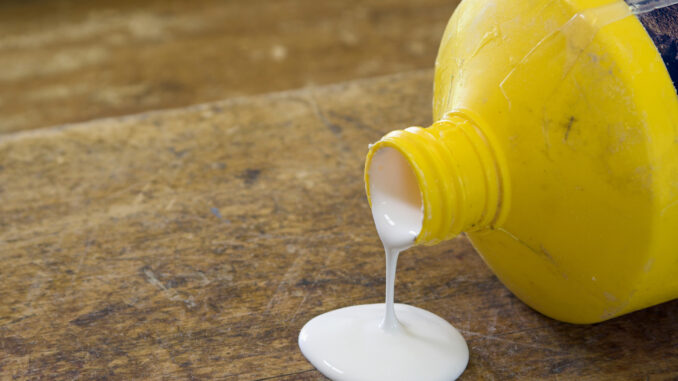
Why Removing Wood Glue is Crucial for Your Projects
Wood glue is an essential part of many woodworking projects. It is used to join wood pieces together securely, ensuring strength and stability in the final product. However, while wood glue can provide a strong bond, removing it can be tricky, especially when it dries. If not removed properly, the glue can leave unsightly marks, affect the finish, or interfere with additional processes like staining or painting. Therefore, understanding how to remove wood glue is crucial for anyone involved in woodworking, whether they are beginners or professionals.
Removing wood glue the right way ensures that the final product looks professional. A clean, glue-free surface is key to getting a smooth finish or ensuring that the stain or paint adheres properly. In this article, we will explore several techniques and methods to help you effectively remove wood glue. Whether you’re dealing with fresh glue or hardened glue, knowing how to remove wood glue from different surfaces will save you time and effort in your projects.
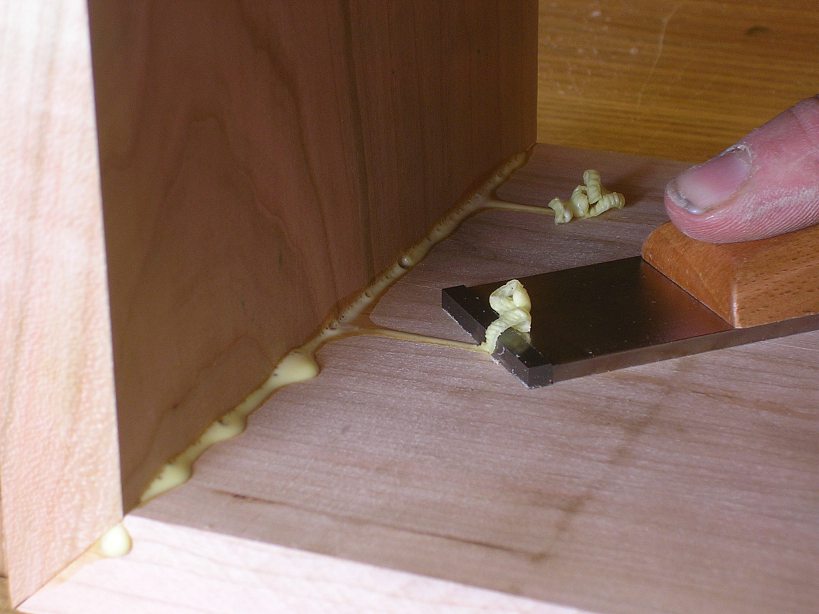
What Is Wood Glue and Why Is It So Stubborn?
Wood glue, as the name suggests, is a special adhesive formulated for bonding wood. It typically comes in several varieties, such as PVA (polyvinyl acetate), epoxy, and polyurethane-based glues. Each type of wood glue has unique properties that make it effective for wood bonding, but these same properties can make it stubborn and difficult to remove once it has dried.
Wood glue works by penetrating the wood’s fibers, creating a strong bond that holds the pieces together securely. Once the glue has dried, it becomes firm and resistant to various cleaning methods. This strong bond is one reason why it’s so difficult to figure out how to remove wood glue once it has set. The bond can seep deep into the wood, making the glue much harder to remove than typical adhesives. Whether you are dealing with a spill, excess glue, or dried spots, learning how to remove wood glue effectively is key to keeping your woodworking project clean and professional.
You might be interested in this article: How to Paint Plywood
Methods for Removing Fresh Wood Glue: Quick and Easy Solutions
When wood glue is still fresh, removing it is much easier. If you act quickly and remove the excess glue before it dries, you can save yourself a lot of work. Here are a few simple methods for how to remove wood glue when it’s still wet.
Wiping with a Damp Cloth
The easiest way to remove fresh wood glue is by using a damp cloth. This method works best when the glue is still wet or soft. Simply take a clean cloth, dampen it with warm water, and wipe away any excess glue. If the glue has started to dry but is not completely set, a dampened cloth can still help you lift some of it from the wood. This process prevents the glue from hardening and making your cleaning job much harder later.
Using a Plastic Scraper
If you’re dealing with a thicker layer of fresh glue, a plastic scraper is a helpful tool. Plastic scrapers are effective at removing glue without damaging the wood surface. Simply run the scraper under the glue, gently lifting it away. Always use plastic to avoid scratching or gouging the wood. If you are not able to remove all of the glue with a scraper, don’t worry — it can be addressed later with other methods.
Sponging Off the Glue
For some types of glue, a sponge can help loosen and lift away the excess. If the glue is not completely dried, dampen a soft sponge with warm water and gently press it against the glue. This will allow the water to soak into the glue, making it softer and easier to remove. After soaking, you can rub the sponge gently to remove the remaining glue. This method is especially useful for cleaning larger surfaces without damaging the wood.
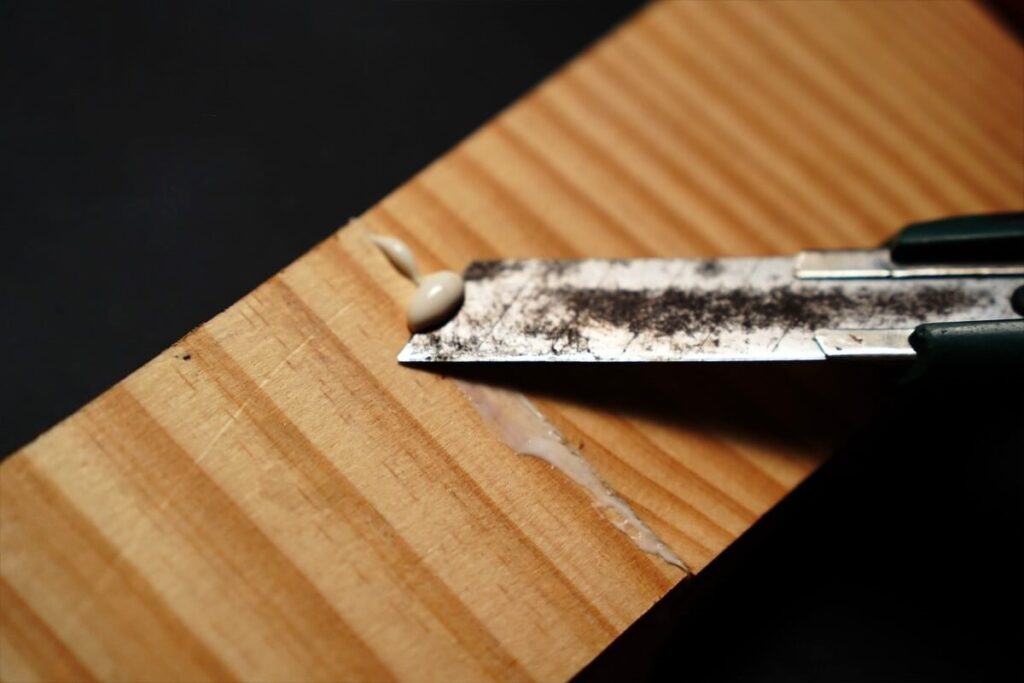
Quick Reference Guide for Removing Wood Glue
This table provides a concise summary of the most effective methods for removing wood glue, whether it’s fresh or dried. It outlines the tools you’ll need, the steps involved, and additional tips to help you tackle glue removal with ease. Use this as a quick reference for selecting the best technique for your specific project.
| Method | Best For | Tools Needed | Steps | Notes |
|---|---|---|---|---|
| Damp Cloth | Fresh glue (still wet or soft) | Clean cloth, warm water | Dampen cloth with warm water, wipe glue away immediately. | Quick and easy, but only works for fresh glue. |
| Plastic Scraper | Fresh or semi-dried glue | Plastic scraper or putty knife | Gently scrape off excess glue. | Avoid using metal to prevent wood damage. |
| Sponge | Fresh glue | Soft sponge, warm water | Use a damp sponge to press onto the glue, soak it, then gently rub to remove glue. | Best for larger areas. |
| Heat Gun | Dried glue | Heat gun or blow dryer | Apply heat from a few inches away, soften glue, then scrape it off. | Be cautious with heat to prevent wood damage. |
| Steam | Dried glue | Steam cleaner or steam iron | Direct steam onto glue, soften it, and scrape off. | Works without direct heat; avoid overheating wood. |
| Acetone | Dried PVA-based glue | Acetone, clean cloth | Dab acetone on cloth, gently rub over glue. Test on an inconspicuous area first. | Harsh on finishes, use carefully. |
| Rubbing Alcohol | Dried glue | Rubbing alcohol, cotton ball/cloth | Dab alcohol on the glue, scrub gently, let sit for a minute, then wipe away. | Milder than acetone, safe for most finishes. |
| Commercial Glue Removers | Stubborn glue residues | Glue remover product, clean cloth | Apply according to product instructions, wipe off the residue. | Follow product guidelines and always test first. |
| Scraping and Sanding | Any type of dried glue | Plastic scraper, sandpaper | Scrape off dried glue, then sand the area with medium to fine grit sandpaper to remove the remaining residue. | Sand carefully to avoid damaging wood surface. |
| Painter’s Tape | Preventing glue stains during application | Painter’s tape | Apply tape to edges of the project before gluing to catch excess glue. | Great for preventing messy application. |
| Glue Spreaders/Brushes | Preventing excess glue during application | Glue spreader or brush | Apply glue evenly with a spreader or brush to avoid overapplication and dripping. | Helps with precise and controlled glue application. |
How to Remove Dried Wood Glue: Step-by-Step Guide
Once wood glue has dried, it can be challenging to remove. The longer you wait to address it, the harder it will be to remove the glue. However, there are several effective methods to get rid of dried wood glue, and we’ll walk through the most reliable ones.
1. Scraping and Sanding Techniques
One of the best ways to remove dried wood glue is by scraping and sanding. These methods require patience but are very effective.
Scraping the Dried Glue
When the glue has dried, scraping is often the first method to try. A plastic scraper or putty knife works well for this task. You can gently slide the scraper under the glue and begin to lift it off. Be careful not to apply too much force, as this could damage the wood beneath. Once the bulk of the glue is removed, you can move on to sanding for a smoother surface.
Sanding the Area
After scraping, sanding the remaining glue is often the next step. Use a coarse-grit sandpaper to start. Lightly sand the area to remove the residual glue. Once you’ve removed the bulk of the glue, switch to a finer grit sandpaper to smooth the surface. Sanding along the wood grain is essential to avoid damaging the surface. Always take your time to ensure you are not over-sanding or causing any harm to the wood’s appearance.
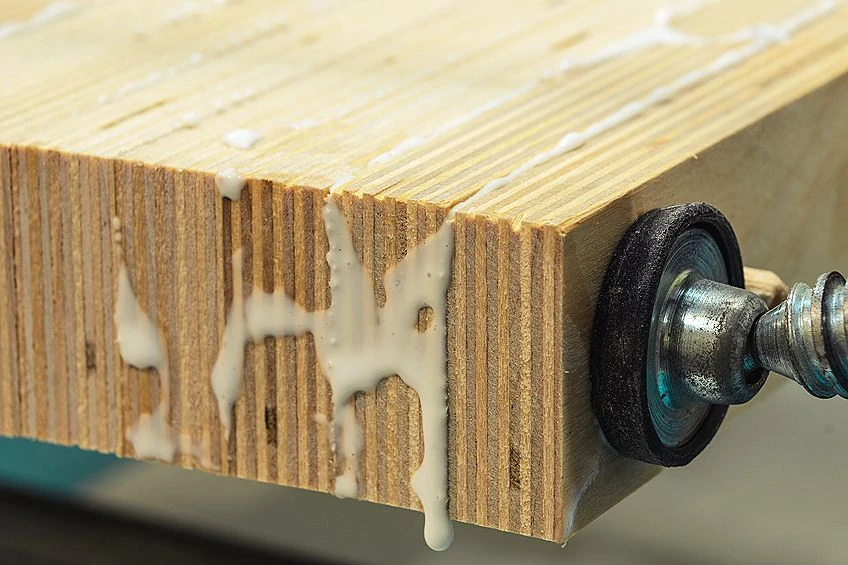
2. Using Heat to Loosen Stubborn Glue: The Power of Steam
Another method for how to remove wood glue involves using heat. Heat softens many types of adhesives, including wood glue, making them easier to scrape or wipe away. Here are two effective heat-based techniques.
Heat Gun Method
A heat gun can be a very effective tool for softening dried wood glue. By directing heat at the glue, you can loosen its bond, making it much easier to remove. Hold the heat gun a few inches from the glue and move it around to evenly heat the glue. Once the glue softens, you can use a scraper or putty knife to lift it off the wood. This method is particularly effective for larger areas or thick glue layers.
Steam Method
Steam is another great way to loosen dried glue without using direct heat. You can use a steam cleaner or a steam iron for this task. To do this, direct the steam onto the glue for a few seconds, allowing the moisture to soften the glue. Afterward, scrape off the softened glue with a plastic scraper. Be careful not to overheat the wood or warp it with steam.
You might be interested in this article: How to Get Smoke Smell Out of Wood Furniture
The Role of Solvents in Removing Wood Glue: What Works and What Doesn’t
Sometimes, the combination of scraping and heat isn’t enough, especially for particularly stubborn glue. In such cases, solvents can come to the rescue. Let’s look at some common solvents and how to remove wood glue effectively.
1. Acetone
Acetone is a powerful solvent that can break down wood glue. It is especially effective for removing PVA-based glue. To use acetone, apply a small amount to a clean cloth and gently rub it over the glue. Be cautious with acetone, as it can damage the wood’s finish, especially if applied in excess. Always test the solvent on an inconspicuous area first to ensure it won’t cause harm when considering how to remove wood glue from your project.
2. Rubbing Alcohol
Rubbing alcohol is another excellent solvent for removing wood glue. It’s less harsh than acetone and can be a better option for delicate wood finishes. You can apply rubbing alcohol to a cloth or cotton ball and gently rub the glue. For tougher stains, allow the alcohol to sit on the glue for a minute or two before scrubbing. This method works best for smaller areas or light glue residue, making it a great choice when you’re trying to figure out how to remove wood glue without damaging the surface.
3. Commercial Glue Removers
Many commercial products are designed specifically for removing wood glue. These glue removers contain various solvents and chemicals that break down the glue’s adhesive properties. When using a commercial product, always follow the instructions carefully. It’s essential to test it on a small section first to make sure it is safe for your wood. If you’re looking for professional advice on how to remove wood glue, using a trusted product can offer a reliable solution.
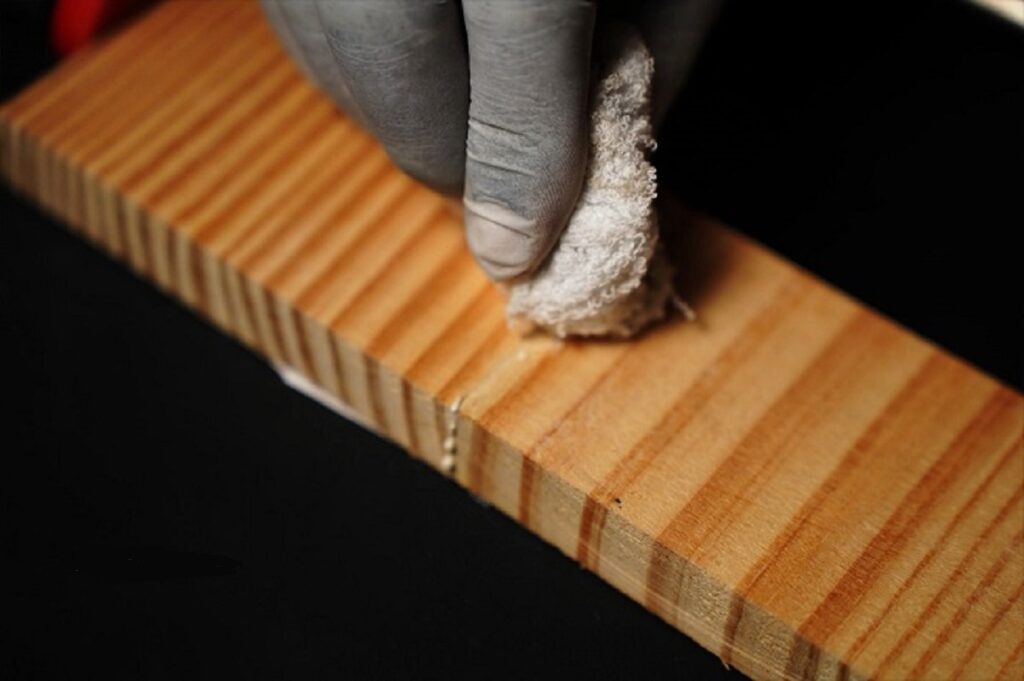
Scraping and Sanding Techniques: Getting Down to the Wood
After you’ve tried heat or solvents, there may still be some glue left behind. This is where scraping and sanding come in. These manual methods are often the best way to remove any remaining glue.
Scraping the Dried Glue
Scraping is the first step after softening the glue with heat or solvents. Use a plastic scraper to lift off the softened glue. Be gentle, as applying too much pressure could damage the wood. Once you have removed as much glue as possible, it’s time to move on to sanding.
Sanding the Glue Residue
Sanding is essential for getting rid of any remaining glue residue. Start with medium-grit sandpaper to remove the last bits of glue. After the bulk of the glue is gone, switch to fine-grit sandpaper to finish the job. Sanding not only removes the glue but also prepares the wood for any finishing, such as staining or painting.
Removing Wood Glue from Fabric or Upholstery: Avoiding Damage
Getting wood glue on fabric or upholstery can happen accidentally. The good news is that you can remove it without ruining the material. Here are some methods for removing glue from fabric.
Use Warm Water to Soften the Glue
For fresh glue stains on fabric, the best first step is warm water. Dampen a cloth with warm water and blot the stain. Do not rub it, as this can spread the glue. The warm water will help loosen the glue, making it easier to remove.
Try Rubbing Alcohol for Dried Stains
If the glue has dried on fabric, rubbing alcohol is an effective solution. Dab a cotton ball with rubbing alcohol and gently blot the glue. Allow the alcohol to sit for a minute or two before scrubbing gently. This method can be safe for most fabrics, but always test it first.
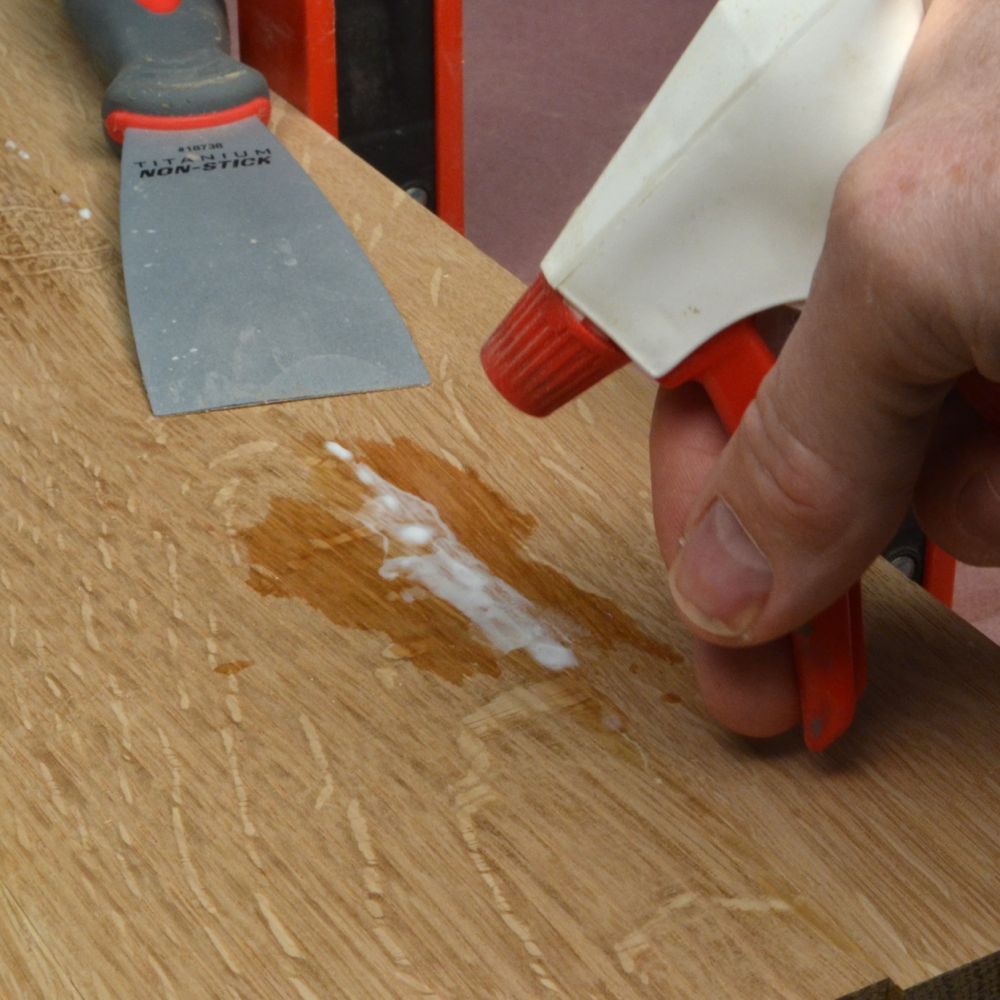
Preventing Glue Stains in the Future: Tips for Clean Projects
Preventing glue stains before they happen is always better than trying to figure out how to remove wood glue after the fact. Here are some helpful tips to keep your projects clean.
Use Painter’s Tape
Painter’s tape is a simple but effective way to prevent glue from spilling over. Apply tape to the edges of the project area before gluing. This will catch any excess glue and make cleanup much easier.
Apply Glue Carefully
One of the easiest ways to avoid glue stains is to apply glue carefully. Use a glue spreader or brush to ensure an even layer, minimizing excess glue that could spill.
Use a Glue Spreader or Brush
A glue spreader or brush helps control the amount of glue applied. This allows you to apply a thin, even layer without the risk of spills or stains.
Cleaning After Glue Removal: Ensuring a Smooth, Clean Surface
After you’ve removed the wood glue, it’s essential to clean the surface thoroughly. Leftover residue can interfere with finishing processes like staining or painting. Use a damp cloth to wipe down the area, and let it dry completely before moving on to the next step.
Wrapping Things Up: Achieving a Flawless, Glue-Free Finish
Now that you know how to remove wood glue, you can tackle any project with confidence. Whether it’s fresh or dried glue, there are several methods available. Scraping, heat, solvents, and sanding all work together to help you achieve a clean, glue-free surface. With patience and the right tools, you can make sure your wood projects end up with a professional, polished finish.